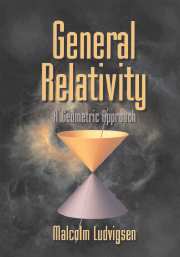1 - Introduction
Published online by Cambridge University Press: 04 June 2010
Summary
One of the greatest intellectual achievements of the twentieth century is surely the realization that space and time should be considered as a single whole – a four-dimensional manifold called spacetime – rather than two separate, independent entities. This resolved at one stroke the apparent incompatibility between the physical equivalence of inertial observers and the constancy of the speed of light, and brought within its wake a whole new way of looking at the physical world where time and space are no longer absolute – a fixed, god-given background for all physical processes – but are themselves physical constructs whose properties and geometry are dependent on the state of the universe. I am, of course, referring to the special and general theory of relativity.
This book is about this revolutionary idea and, in particular, the impact that it has had on our view of the universe as a whole. From the very beginning the emphasis will be on spacetime as a single, undifferentiated four-dimensional manifold, and its physical geometry. But what do we actually mean by spacetime and what do we mean by its physical geometry?
A point of spacetime represents an event: an instantaneous, pointlike occurrence, for example lightning striking a tree. This should be contrasted with the notion of a point in space, which essentially represents the position of a pointlike particle with respect to some frame of reference. In the spacetime picture, a particle is represented by a curve, its world line, which represents the sequence of events that it “occupies” during its lifetime. The life span of a person is, for example, a sequence of events, starting with birth, ending with death, and punctuated by many happy and sad events.
- Type
- Chapter
- Information
- General RelativityA Geometric Approach, pp. 3 - 11Publisher: Cambridge University PressPrint publication year: 1999

